When: March – November, 2022
Where: Delhi, India
Institution: The Heritage School, Vasant Kunj
Participants: teachers
Facilitator: Doris Sommer – Miss Maya
The teachers of The Heritage School, Vasant Kunj got a wonderful opportunity to interact, learn and explore an interesting way of approaching difficult texts with the developer of Pre-texts, Professor Doris Sommer.
The Pre-texts training programme which began in the month of July consisted of six sessions. Members from different faculties came together to be part of this programme. Breaking through the barriers of distance, learning found its way as all the members connected virtually to transform the teaching-learning process. The sessions were engaging and interactive. The first session was facilitated by Ms. Sommer wherein all the participants got to experience their first pretext class. In the following sessions, all the participants got a chance to be the facilitator and lead the class under guidance of Ms. Sommer who helped all the members understand the rationale behind each activity and the core principles of Pre-text which makes it approachable and ensures fruitful learning.
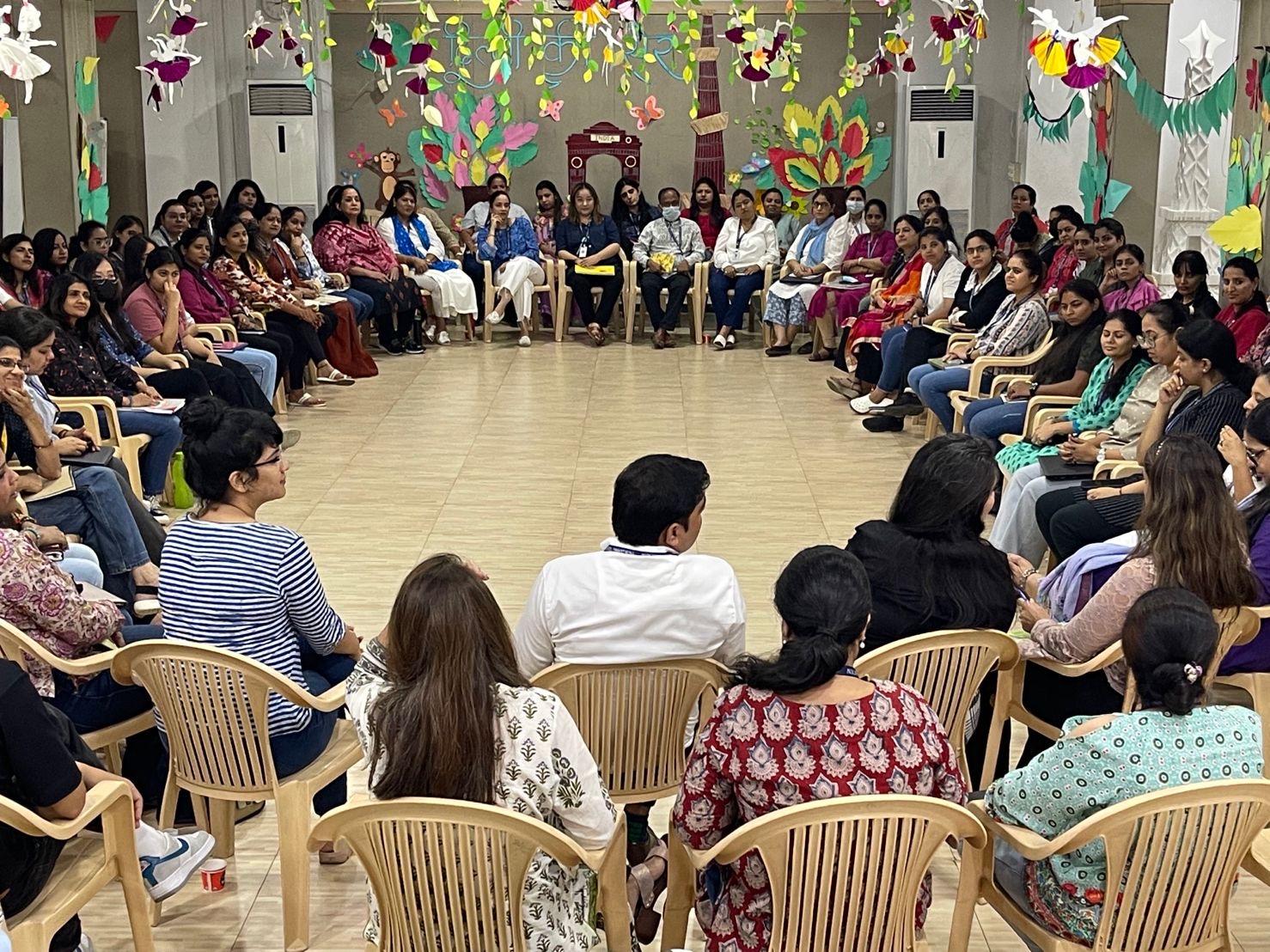
Pre-text gives life to the text. It beautifully integrates art with various disciplines supporting new dimensions, abstract vocab and skill set. It firmly believes that each person interprets same piece of writing in different manners, no two minds think alike. A pre-text class vibrates with an abundance of creative energies. It embraces multiple viewpoints and is interdisciplinary in nature. It also believes in the power of hearing different voices. Each learner has a persona, which brings innovative thoughts and ideas to the class. One of the essential principles of Pre-text is the idea of co-creation. All the members of the group collaborate and collectively create the lesson. Learners are placed at the centre wherein they take ownership of their learning. They are provided with a space which allows them to exercise freedom and take decisions without judgements. Learners like little explorers, trace their paths collectively as they co-create and collaborate while respecting and acknowledging each other’s thoughts. Pre-text in a very subtle manner works on building civic relationships amongst learners as they become comfortable with the existence of different perspectives. Reflection is another key aspect of Pre-text which initiates rich conversations in the class. The question “What did we do?” is often floated around wherein the learners consciously reflect on the process of learning and at the same time are mindful of their thoughts. Pre-text also emphasizes on making connections with text to the world which in turn allows learners to be more aware and sensitive towards problems in society and look for effective solutions.
To sum up, adopting Pre-text’s holistic approach in our curriculum has been a truly transformative journey for all the educators.
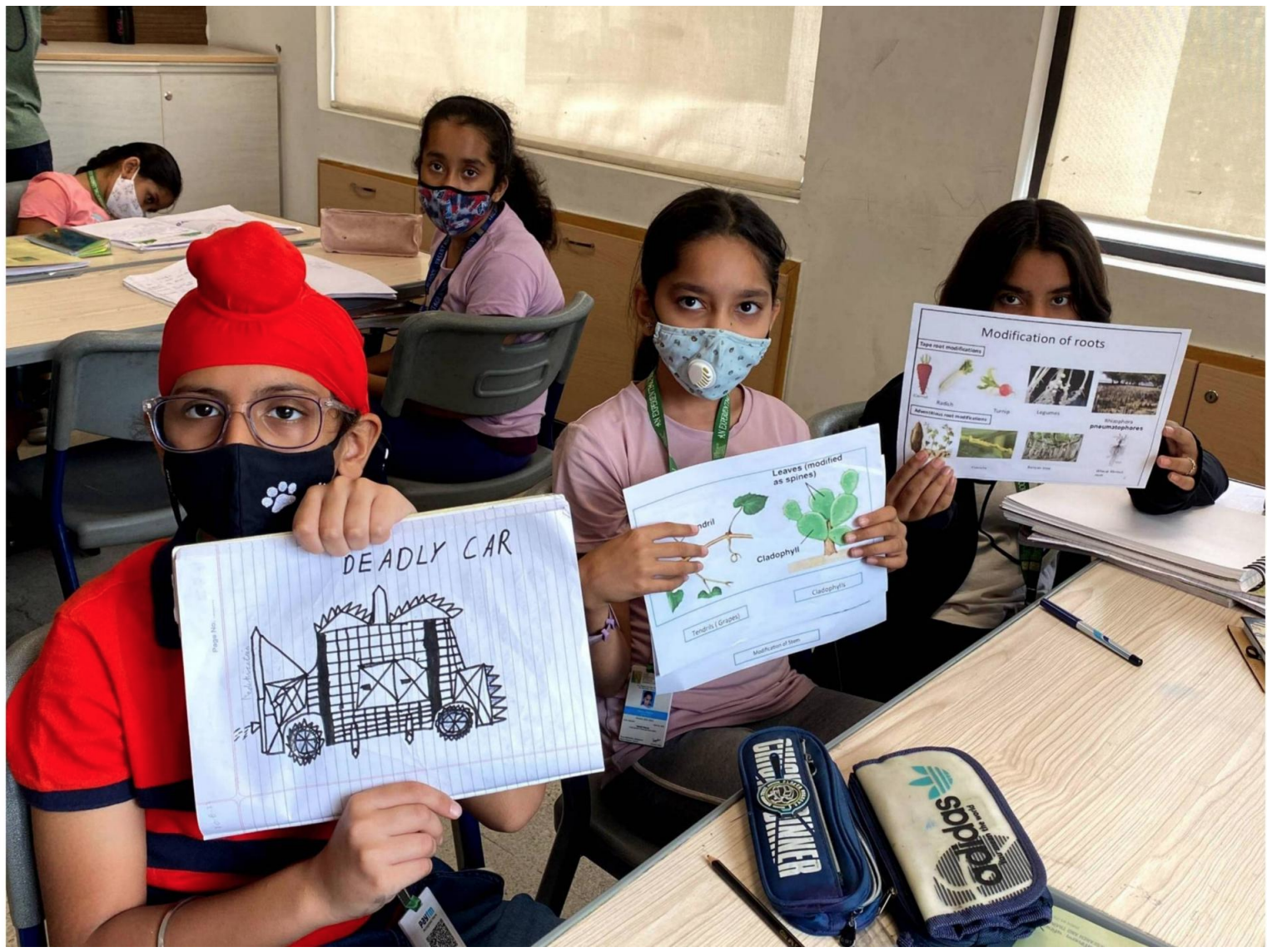 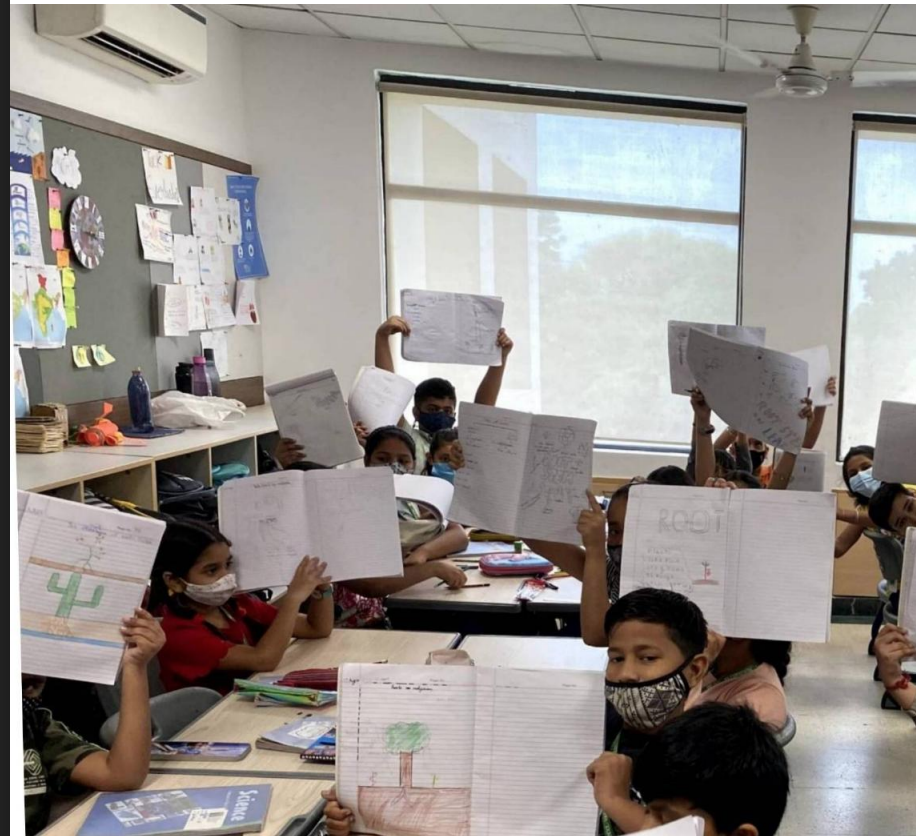 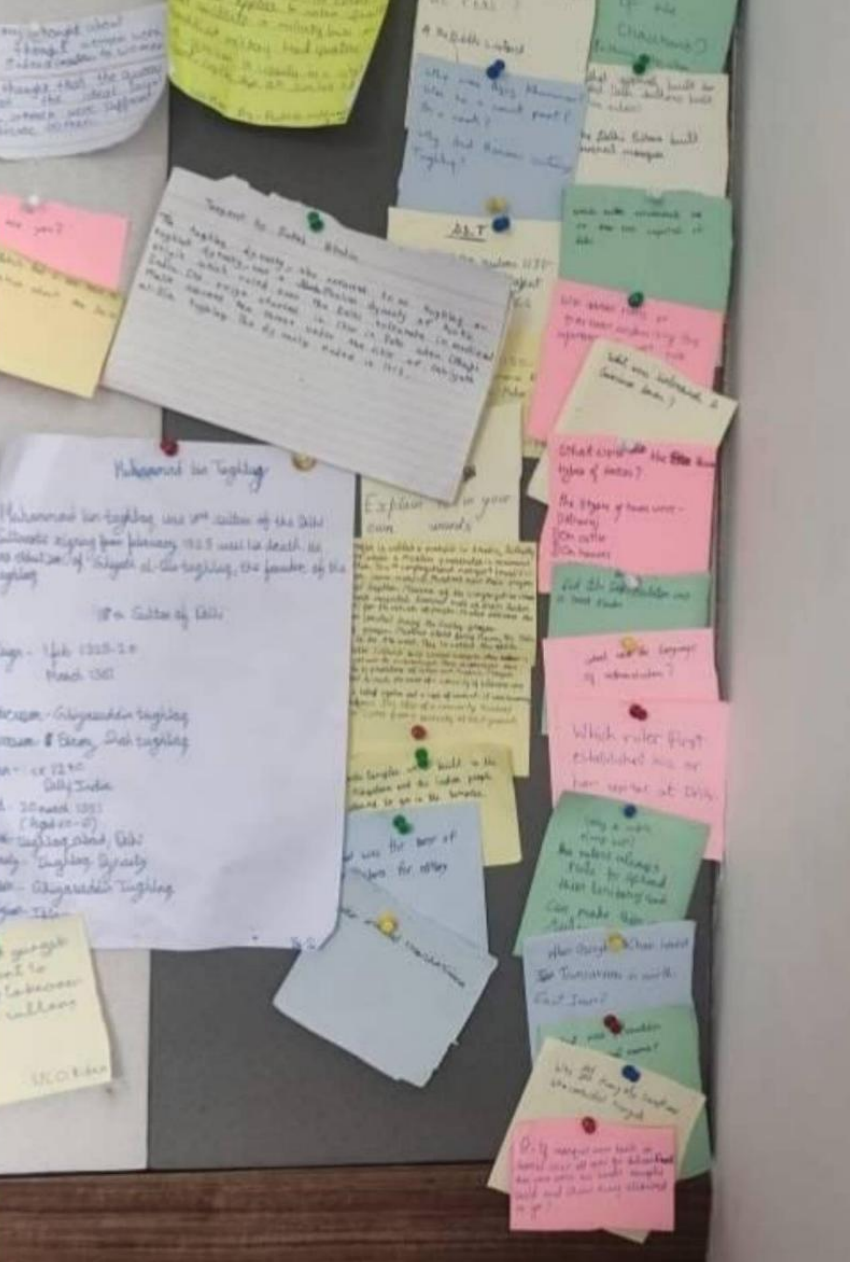 |
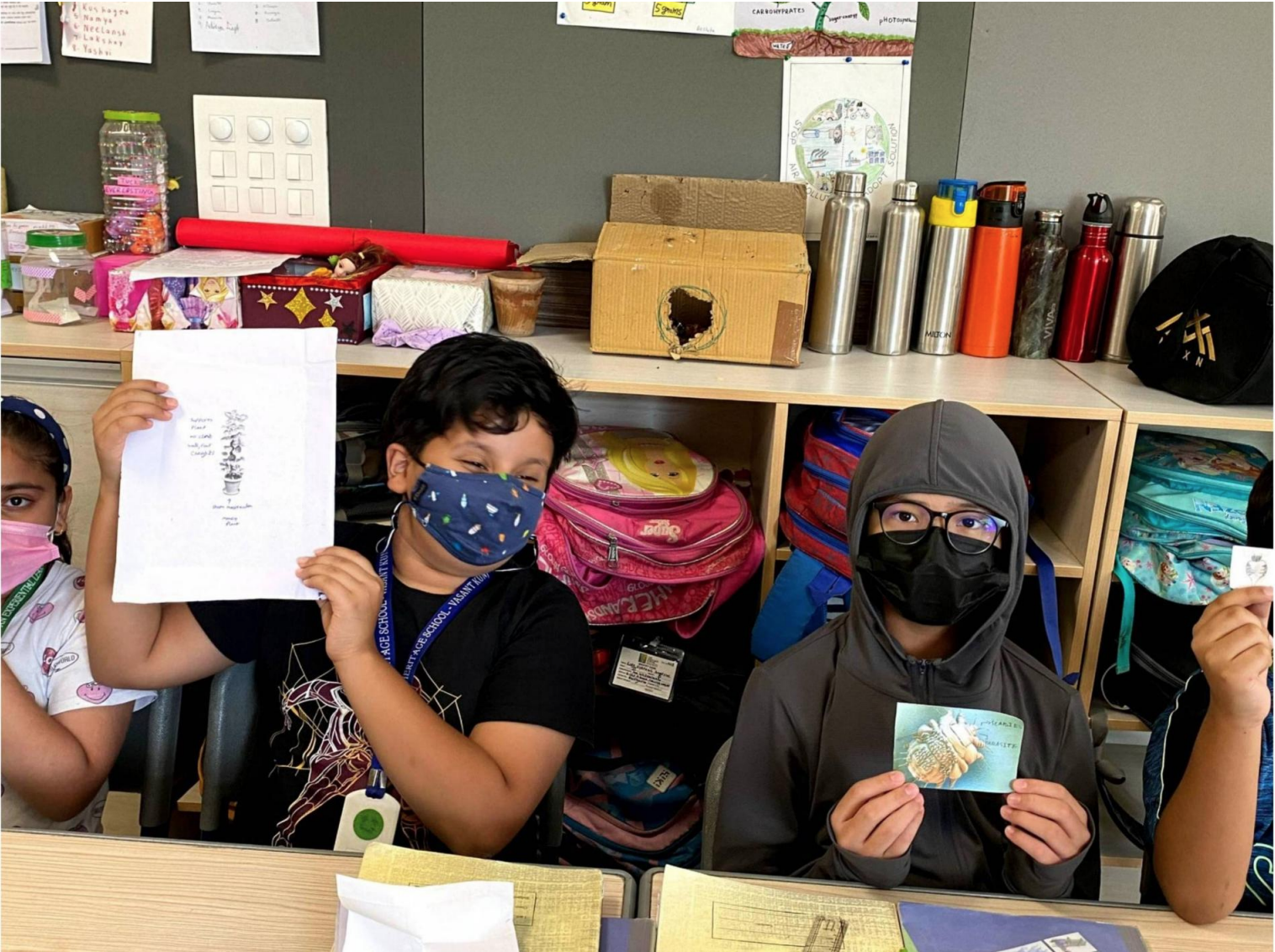 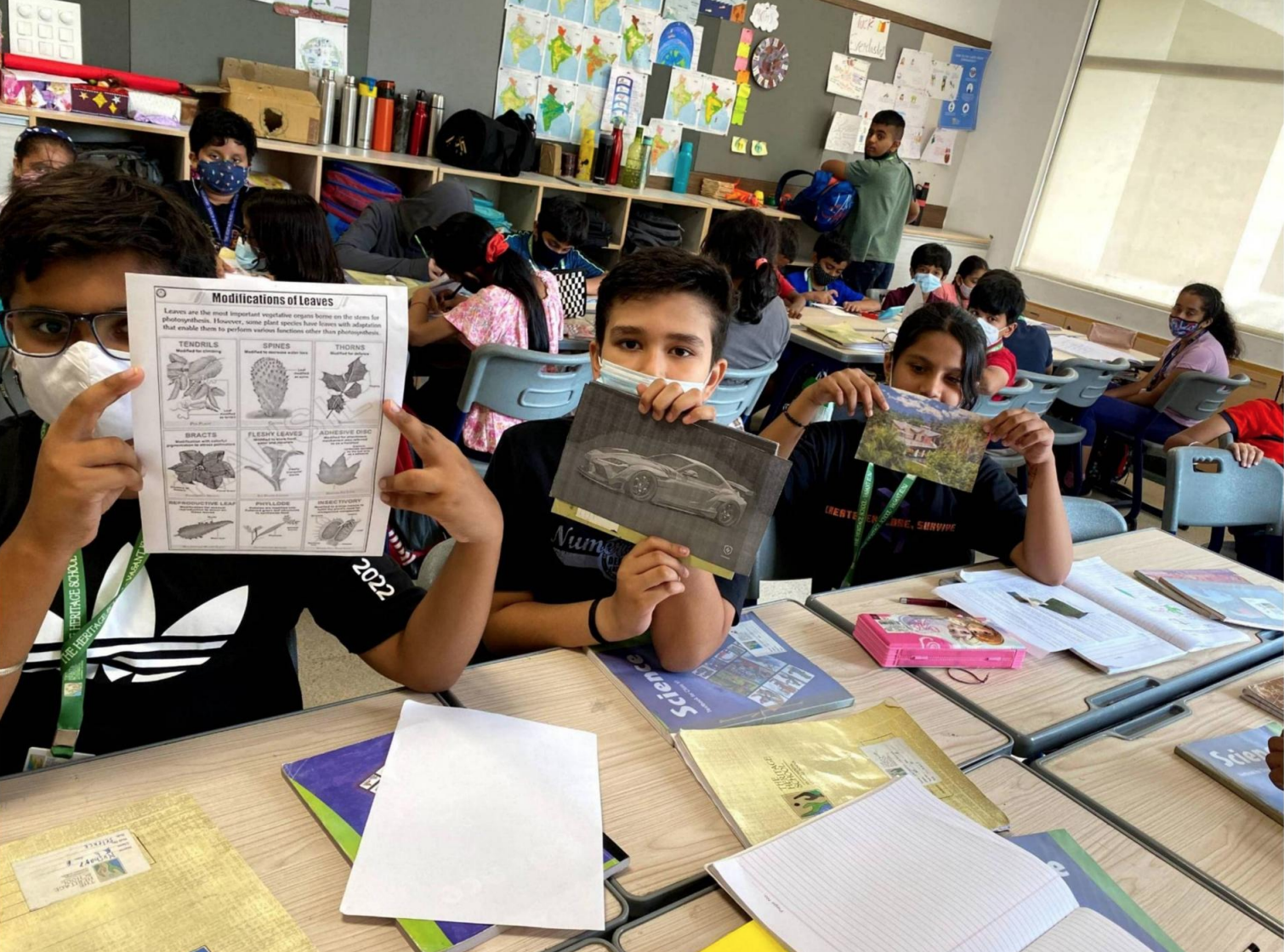 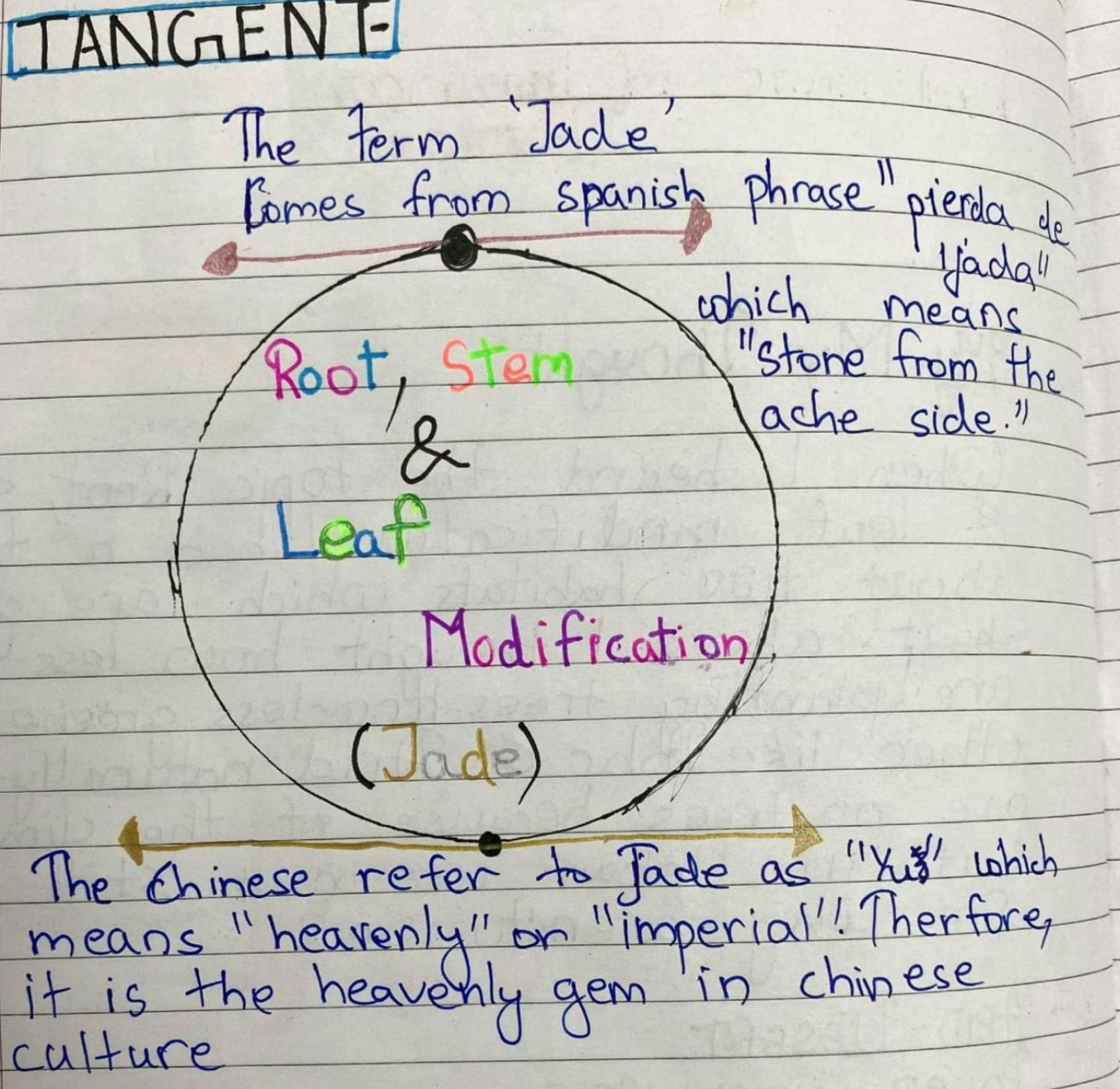 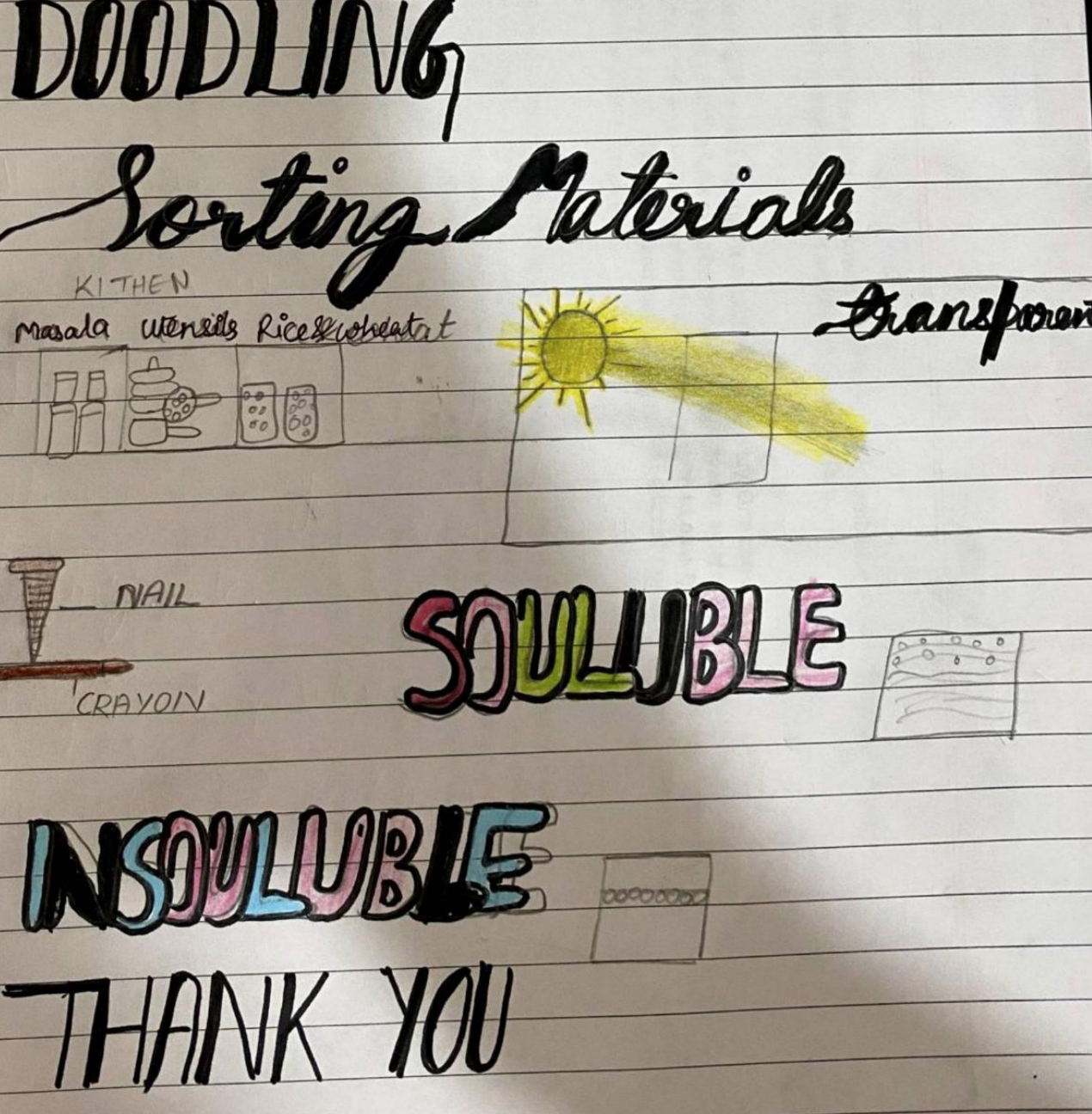 |
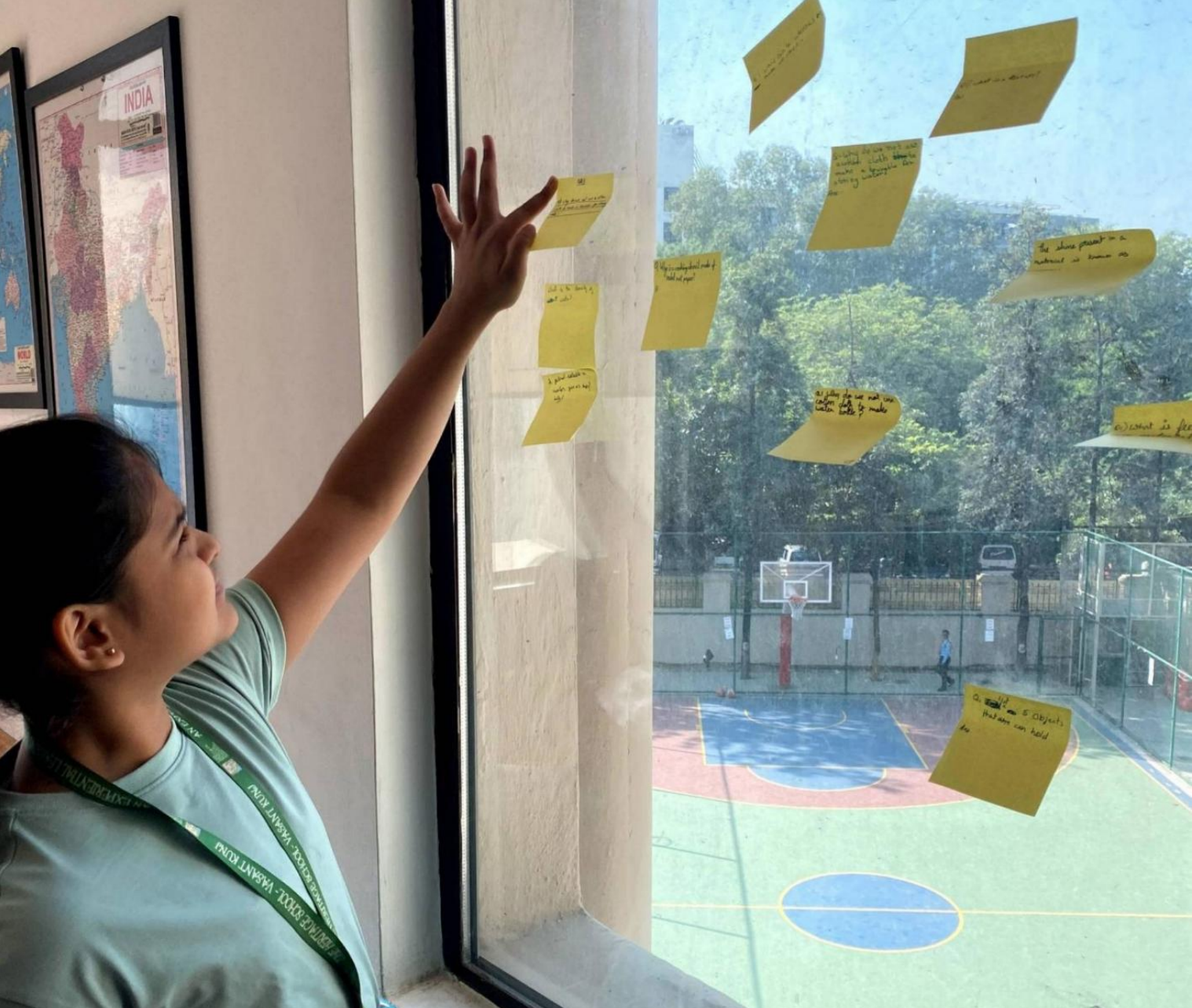 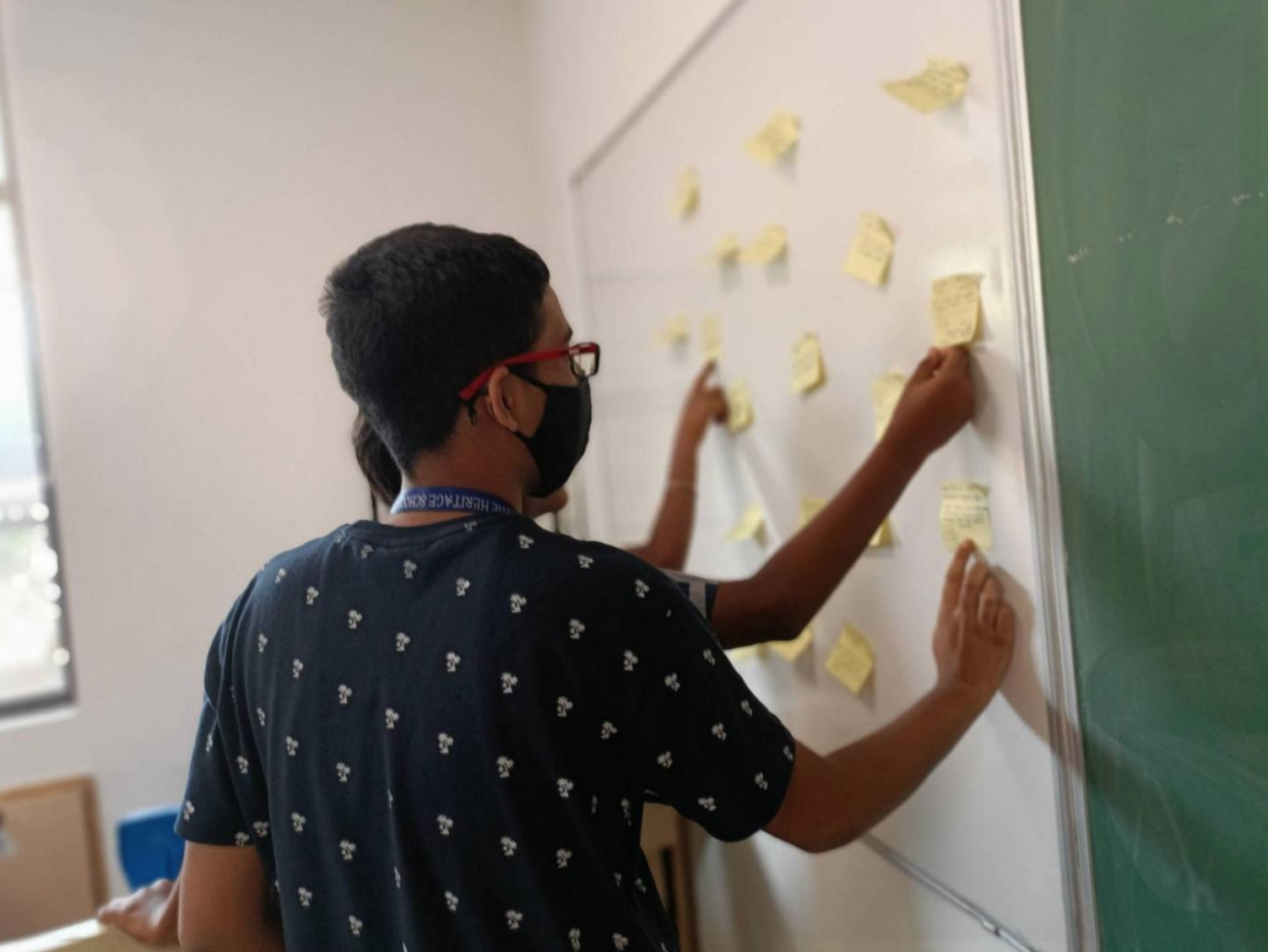 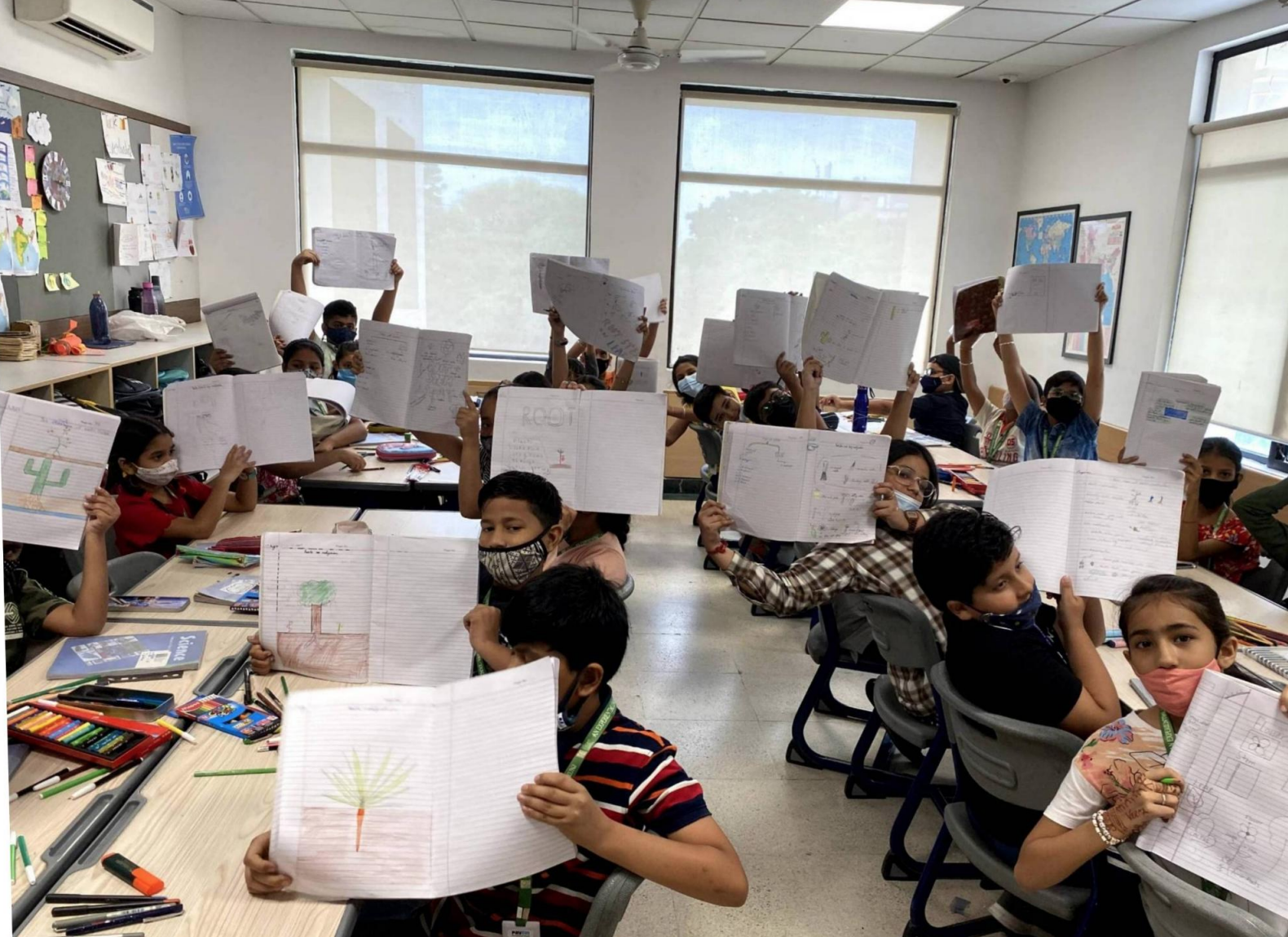 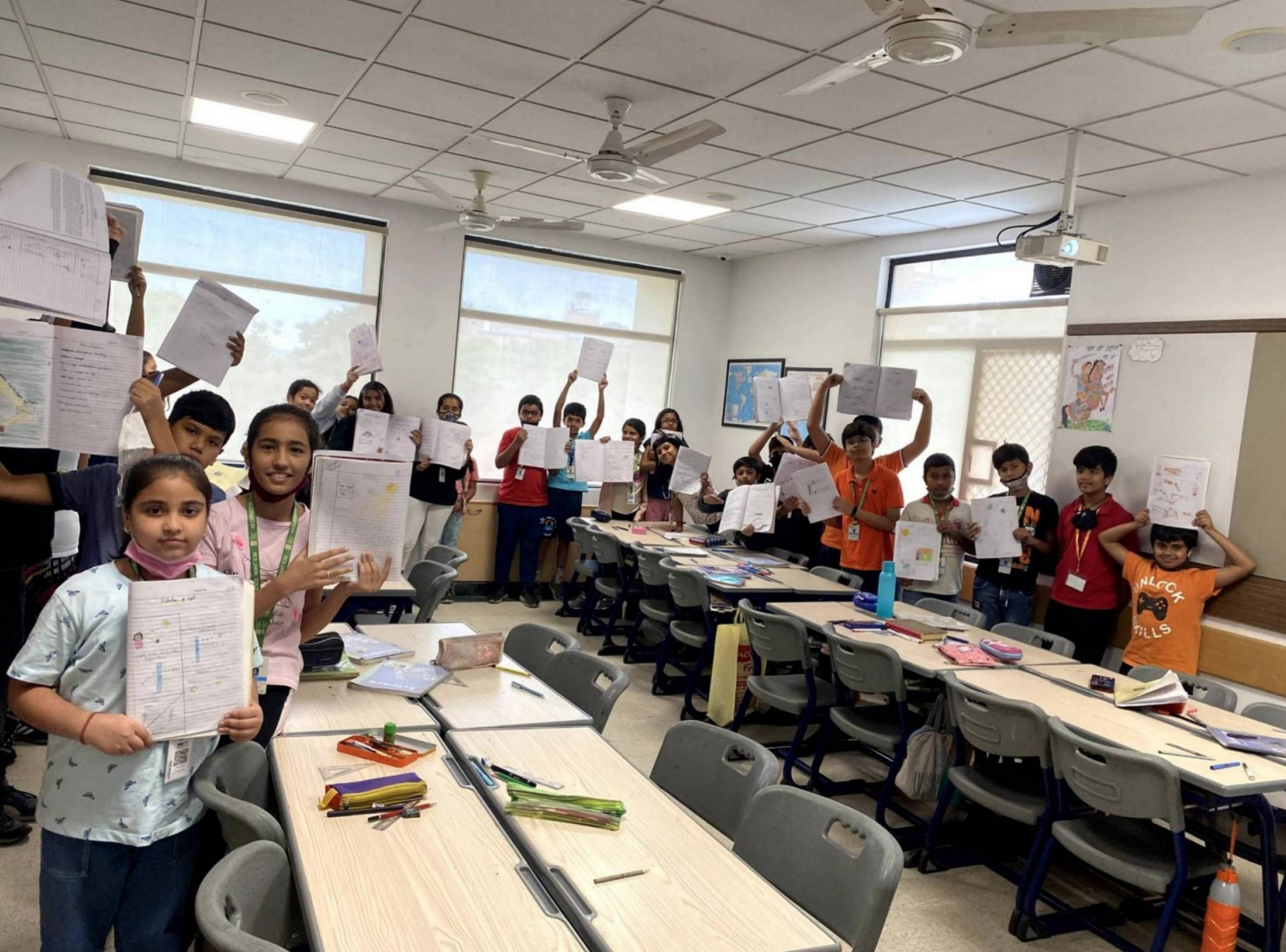 |
When: September 6th, 2022
Where: Delhi, India
Institution: The Heritage School, Vasant Kunj.
Participants: Ms. Shruti Shukla and Ms. Sudeshna Ghorui from Lead Foundation; Ms. Shreyoshi Saha and Ms. Divya from ImmerseGo; Mr. Vivek, Chairman of Vivek Modern School, Delhi; Ms. Nitika, Ms. Indu and Mr. Devang from Vivek Modern School.
Facilitator: Sunita Swaraj
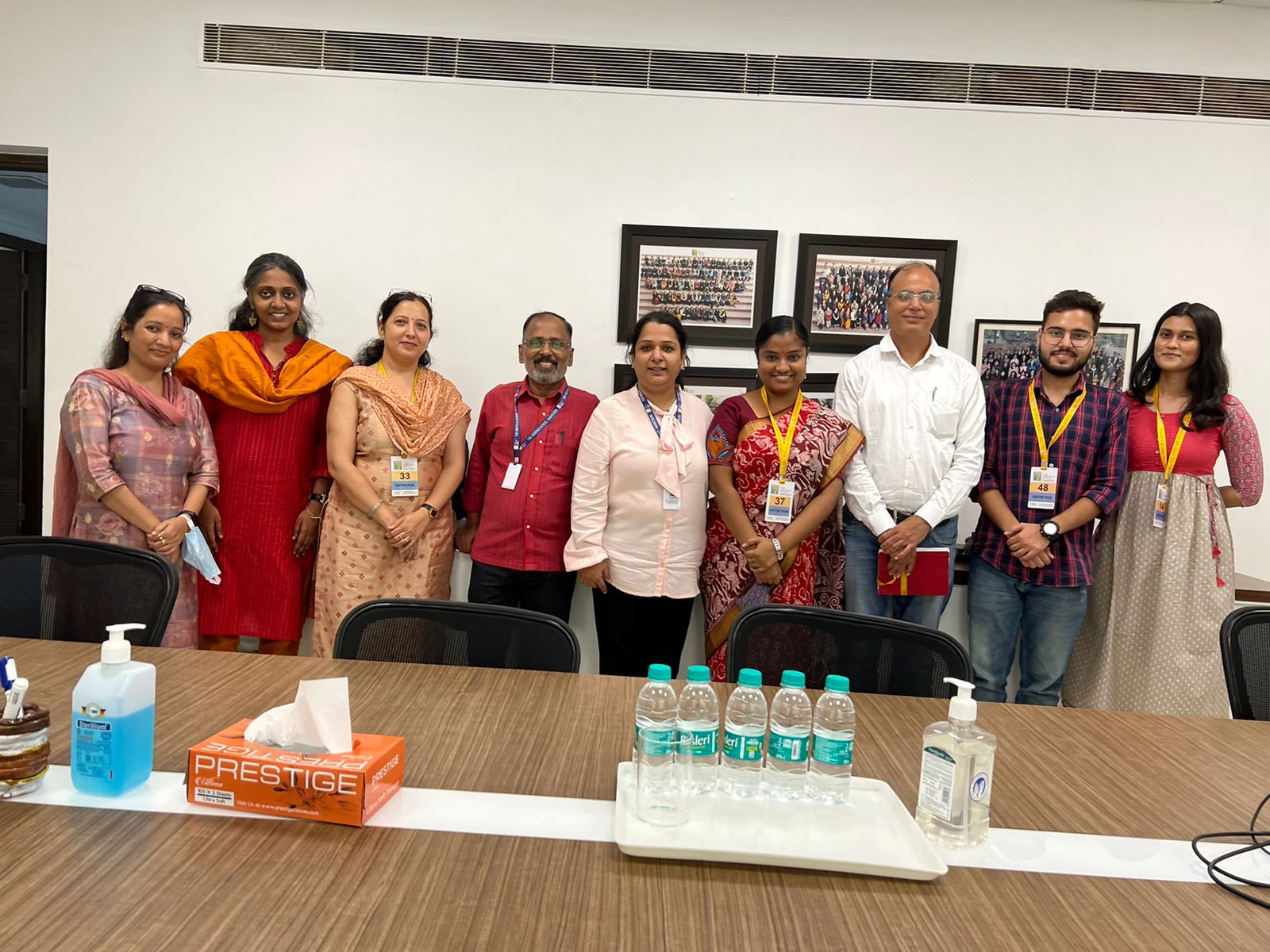
Our teachers had the marvelous opportunity to learn from Prof. Doris Sommer, the developer of Pre-Texts and Founder of the Cultural Agents Initiative at Harvard University. Teaching children what to think instead of how to think can be dangerous. Advocacy-based teaching deprives them of the skills they need to reach their own conclusions. Instead, they learn to parrot what they know they’re supposed to say to get good grades. Children are really good at that, but it doesn’t translate to actually believing what they are saying or knowing why it’s supposed to be important. When you present students with different viewpoints, they develop critical skills, learn how others think, and understand why they came to a given belief. Our teachers acquired a plethora of knowledge from Doris during the month-long teacher training workshop. With the intention to bring this form of teaching to each and every grade of our school, our school has set forth on a journey of educational revolution.
On the 6th of September 2022, The Heritage School, Vasant Kunj had the privilege to host dignitaries from schools and organizations across the country. The school warmly welcomed Ms. Shruti Shukla and Ms. Sudeshna Ghorui from the School to Lead Foundation, which is one of the implementation partners for ‘Pre-Texts’ in India and aims to catalyze excellent education using the tool of collaboration. We also had the honor to have Ms. Shreyoshi Saha and Ms. Divya with us, who are representatives from ImmerseGo, an impact organization making experiential art integrated learning and wellbeing accessible to everyone through technology. Mr. Vivek, the Chairman of Vivek Modern School, Delhi also graced us with his presence, along with Ms. Nitika, Ms. Indu and Mr. Devang, who hold the posts of Principal, Vice Principal and teacher at Vivek Modern School respectively.
We welcomed our guests who had come to experience the learned practices of Pre-Texts which our school has been implementing since the month of July 2022. To help our fellow educationists explore and observe the various facets of the Pre-Texts’ application, our school devised a mindfully curated observation plan for the entire team, covering Junior School, Middle School and Senior School and subject areas ranging from English, Mathematics, Science and Social Studies to niche subjects such as Marketing and Economics. A total of eight observations were conducted through the course of the day, with each observation session being followed by reflection time with different members of The Heritage School team, who have been a part of Prof. Sommer’s teacher-training module and are actively executing the learnt practices in our school by seamlessly integrating them with the school curriculum. During each reflection time, the academicians shared their first-hand experience of ‘Pre-Texts’ in action, clarified their queries and made our team privy to the various struggles and challenges faced by their organizations which were hindering their objective to foreground this revolutionary practice. Our team catered to all of the queries and inhibitions that were put forth by sharing their journey with Pre-Texts so far.
Our teachers shared that when we provide students with details for a particular assignment, lead a discussion, proposing solutions to confusions, we help them to tackle any challenging assignment that comes their way. By penning down doubts and questions about the assignment and then bringing a research-based tangent for addressing the areas which might be more enlightening for the concept, we are making the students independent and in charge of their own learning. It was discussed how over time; less guidance and feedback will be required to help students with the reflective thinking process and how they will eventually be able to lead the learning process. Once the learner starts to play an active part in the teaching-learning cycle, they become more aware of different learning styles and tasks. They become more aware of their preferred style of learning and develop key skills and strategies to become lifelong learners.
After a fruitful day of observations and learnings, the entire Heritage learning community and our eminent guests gathered together to cumulatively reflect upon their day long experience and share their reflections. Being exposed to different perspectives, through discussions with students, or through the deployed resources such as tangents and simulations, they witnessed how learners were able to represent different points of view, and participate in a dialogue with others, peers and instructors alike, about matters of importance, which are critical to the reflective learning process. It was shared that having students work collaboratively can facilitate this, as they learn to listen to others and consider different approaches to solving problems.
The visiting faculties were impressed by the efficacy of ‘Pre-Texts’ as it creatively engaged our students across grades and subjects. The reflective discussions prompted various questions such as, ‘What challenges are you having?’, ‘What are you planning to do about those challenges?’, ‘What problems did you encounter in completing the assignment?’, ‘How did you troubleshoot them?’, ‘What still needs work?’. Since every organization has its own limitations with respect to budget, teacher student ratio and the time constraints for completion of lessons, the observers were a little apprehensive about implementing Pre-texts in their respective schools. They also shared the various administrative constraints that they have to overcome in their respective schools if they are considering the implementation of Pre-texts. Since The Heritage School, Vasant Kunj provides immense facilities and freedom to teachers for implementing unconventional methods of teaching, execution of this practice was made easier by the existing progressive culture of the school.
To address these pertinent queries, our teachers explained their progress and the strategies they are using while they work on an assignment using Pre-Texts as the methodology. While reflecting, our teachers focused on their personal strengths, gaps, resources, standards, values, response to challenges and strategies. The reflective conversations lead to clarity about the relative effectiveness of their educational approaches by reflecting on their own teaching activities and comparing the same with the teaching practices of The Heritage School, Vasant Kunj. Thereon, our guests shared that they were looking forward to the changes in teaching methods brought on by implementing Pre-Texts and were considering using it in their respective schools based on the outcomes of this methodical approach.
The entire experience of Pre-Texts has been enriching for the teachers as well as the students.
When students learn new concepts or subject matter, they often experience a sense of uncertainty and disequilibrium until they can make sense of the new information. Critical reflection is necessary to assimilate the new information and resolve the state of disequilibrium. Pre-texts has sparked a new age outlook in the students and the curiosity has motivated them to engage in the reflective process of learning, while transitioning the classroom space from that which ‘covers material’ to that which is ‘focused on actual learning’.
Our school believes that by working in collaboration with the students, relationships become positive and demonstrate mutual respect. Students feel that they are a part of the learning cycle and are more self-aware. All of these things together result in a productive learning environment.
The day’s experience was not only helpful for the visiting teams’ endeavors to introduce an experiential and holistic education in the country but was also a wonderful way for our teachers to take stock of their experience. We’d like to extend our heartfelt thanks and gratitude to Prof. Doris Sommer for introducing us to Pre-Texts, the game changer of education in India and giving us the opportunity to be a part of this educational revolution.
| When: February 20-26, 2022 Where: Pune, Maharashtra, India Institution: FLAME University Facilitator: Doris Sommer |
|
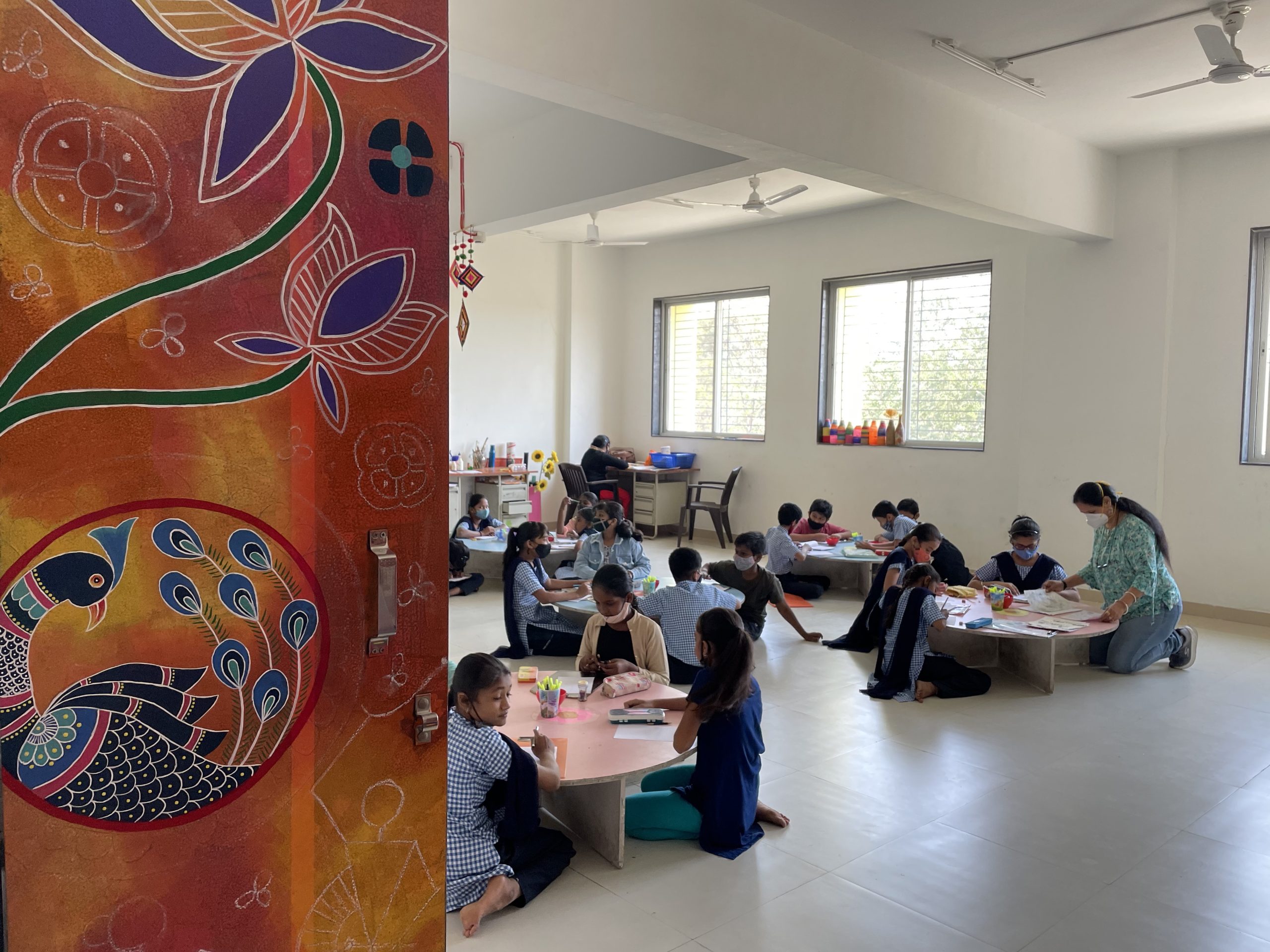
During the week of February 20 to February 26, Doris Sommer represented the Lakshmi Mittal South Asia Institute of Harvard University in Pune, Maharashtra, India, to initiate a research project on Pre-Texts with Prof. Yugank Goyal of at FLAME University. The objective is to determine the effectiveness of Pre-Texts, a pedagogy based on interpretation through the arts. The timing is auspicious for this study.
Recently, the Indian government instituted a mandate to integrate arts into the curricula of all schools. This an admirable step forward in education can take advantage of the rich traditions of art that generate pride of place for India, by region and nationally. The challenge for teachers and principals is how to implement the arts-integration directive. Where schools have begun to develop the practice, art is engaged as a final step of lessons, to illustrate a lesson learned.
Professors Sommer and Goyal visited two municipal schools run by the government mentored by LFE (a nonprofit), one run by Akanksha (another nonprofit), three private schools, namely, Millenium School, Kalmadi School and TAS, all located in Pune. In addition, Sommer and Goyal addressed a seminar consisting of school principals and coordinators from ten other schools in the region. There were several other meetings with relevant stakeholders that also took place.
With good intentions, teachers follow Bloom’s taxonomy which understands teaching and learning in a pyramidal design, starting from a base of technical information (vocabulary grammar, formulae), ascends to an understanding of the material, proceeds to interpret the material and concludes with a creative expression of what has been learned. It is perhaps easy to see why this process of scaling up often fails: Students become bored or disaffected, even fearful and resentful, when the first stage is memorization of new words, concepts, and formulae. They do not scale up to understanding and interpretation and therefore cannot realize an art project based on the lesson. This is a mistake in pedagogical practice. The more conceptual error in this conventional use of Bloom is that here art represents an expression of what one already knows, rather than an exploration of new material. The standard practice forfeits art’s power to engage the reading material and become a vehicle for learning.
With Pre-Texts, none of the steps is lost. But the pyramid begins from the top, with a challenge to make art from a text. The difference is dramatic. Students who are addressed as artists rather than struggling learners convert difficulty into challenges rather than obstacles. See, for example, Kalmadi’s 8th grade class tackling “The Beggar” by Chekhov. Explorations of the texts to be mastered, through dance, drawing, theater, creative writing, etc. develop personal associations and idiosyncrasies. And the differences of interpretation are contributions by the variety of classmates. Difference becomes a value rather than an error.
The teachers, principals, and students who participated in demonstrations of Pre-Texts experienced the advantages of this approach very clearly. Each school was eager to be chosen as the site for our pilot intervention and even inquired about the cost of training should they be chosen. Our visits adjusted to different styles and conditions of the schools. Almost all gave us a formal introduction to the classroom we visited, with a teacher instructing rows of seated students to stand, to greet in one voice and to sit down. The conventional power of authority was predictable and palpable.
During our conversations with teachers, Doris observed that the choreography of a classroom is at least as important as the content of a lesson. Rows of students where the “bright” ones sit in the first row without seeing other classmates, and the others see the backs of heads of their peers, while all look at one authority, is an arrangement that breeds worse outcomes than mere authoritarianism. The corollaries are indifference to the lesson and corruption. Most teachers know that the students in the back row are doing something different from following the lesson. Disaffected and often ignored, they do what they want and make their own rules. The first thing Pre-Texts does is change rows into circles, or ovals. The criterion is for all to be visible and vulnerable to all. Where this is spatially impossible, we make ovals or U-shaped formations during the protocol, when we share initial questions to the text and final reflections on a completed activity.
In one 8th grade class in a municipal school, beautifully and traditionally dressed girls who had greeted us royally with a local dance and song were our inspiration for proposing there that we dance a paragraph from a text that they had not yet read in English class. Immediately, everyone located their books – without prompting – and asked each other and the teacher to clarify words and grammar. Five companies of dancers emerged, with prompting to achieve gender equity. To our surprise and delight, companies that did not identify as experts in dance performed more interesting interpretations than did the troupe that had greeted us.
Later that Tuesday, in an all-boys municipal school, a 6th grade math class was studying geometry. We invited the teacher to find a challenging lesson that the students had not yet read. The choice was a page on cones and pyramids. The large class of 40 boys moved to the hallway on the teacher’s recommendation and divided into groups of 6-7 students. They performed a cone in each group by standing in a circle and raising their arms at an angle to form inclined lines into a cone. Then each troupe presented their work. Here the principal was quick to correct a flat-topped formation until he understood that the students of the other troupes were “advisors” whose role it was to correct and perfect the formations of each group. They were admirably precise and gentle with one another. Relieved from competing to be the best or the first to answer questions, students collaborated and supported one another. This observation became a leitmotiv during the entire week, repeating in each of the six schools we visited.
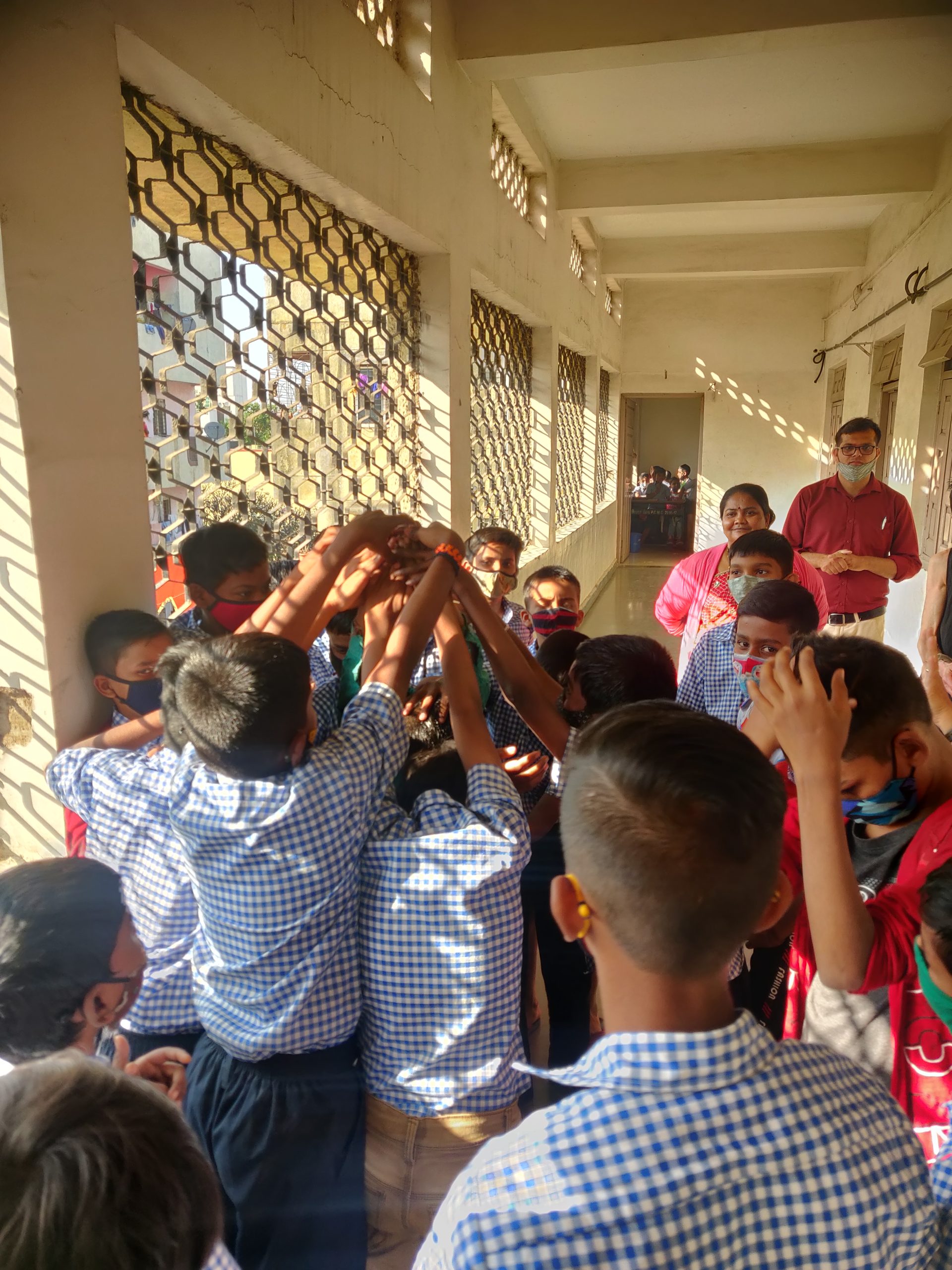
Then Doris asked the boys, almost teasing, if they wanted to tackle the pyramid, or if one shape was enough. Yes, yes, let’s do the pyramid many answered. Then they got busy consulting the book and each other. Concerned that this was too difficult, the mentor from Learning For Equity (LFE) thought it was enough to do the cylinder on the same page. But, since the boys were already engrossed in their work, Doris decided to let them continue. The mentor was impressed with their determination and with the results. Afterwards, in the reflection that follows each Pre-Texts activity, when we ask, “What did we do?”, the 40 boys arranged themselves in a U-shape inside the classroom, taking advantage of two aisles and the front, since there was almost no room for circulation. The comments were generous with one another and happy to have achieved a difficult task with pleasure and collaboration. Also, as in all cases, they commented on how good it felt to see one another.
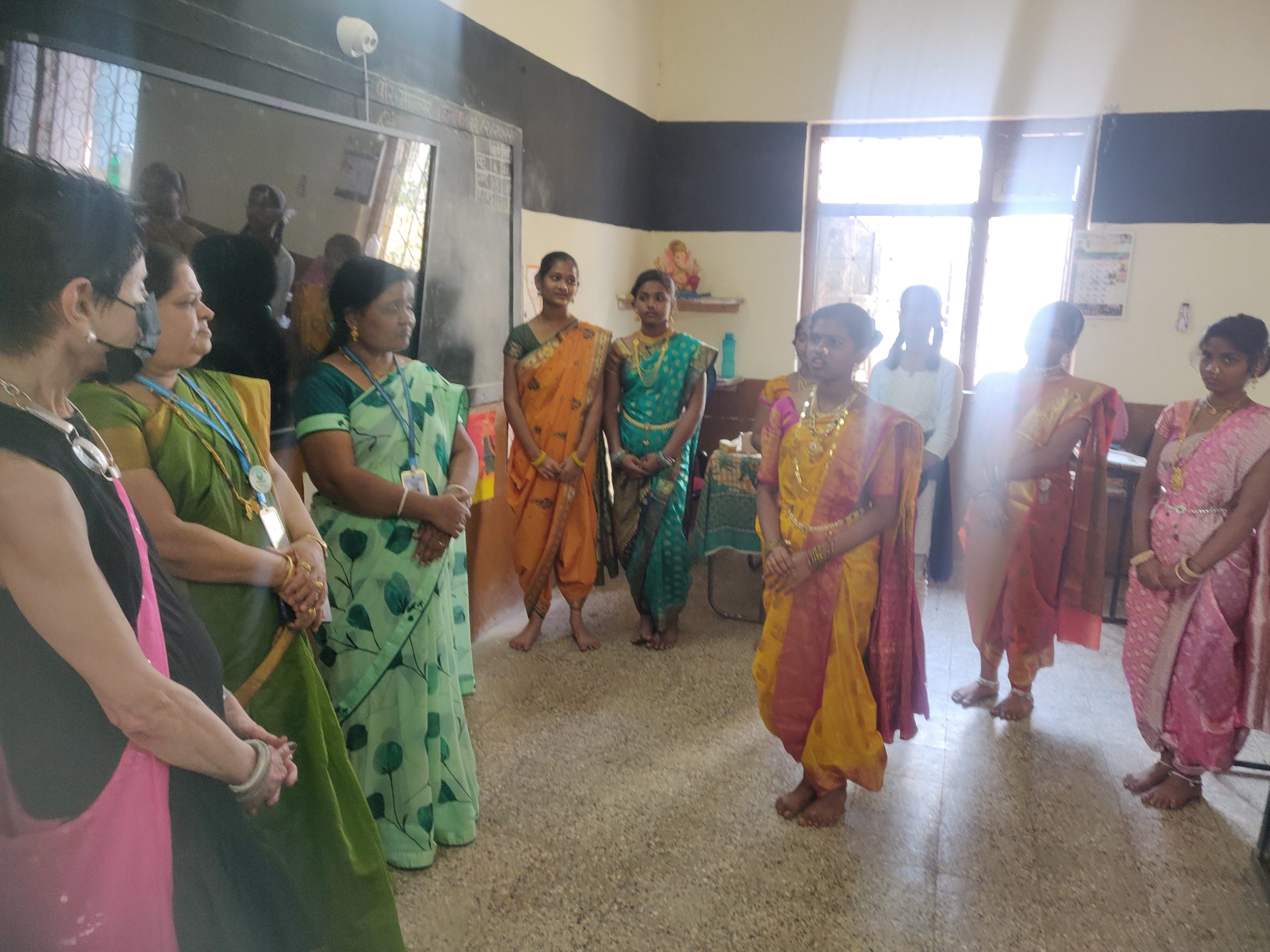
The week’s meetings included an exploratory conversation with LFE, an NGO that supports government schools by, inter alia, training and accompanying the mentors appointed by the national government to train and to frequent government schools to monitor teachers, on the ground. Doris and Yugank made a brief presentation of Pre-Texts, including the evidence gathered by the Shamiri Institute in Nairobi on the mental health intervention in that city’s biggest slum, In Kibera, half the adolescents are clinically depressed, with no money for therapy, no available therapists, and stigma against acknowledging mental disorder. Pre-Texts does therapeutic work there, with no change of protocol. It is an effective and low-cost, de-stigmatizing, intervention, because the entire cohort of adolescents participates, without tagging one or the other as ill. So far, the results have been very positive, stunning in fact, after one -month of after-school programs by young facilitators who have no or little experience teaching but who follow the protocol shared by the Shamiri director, Tom Osborn.
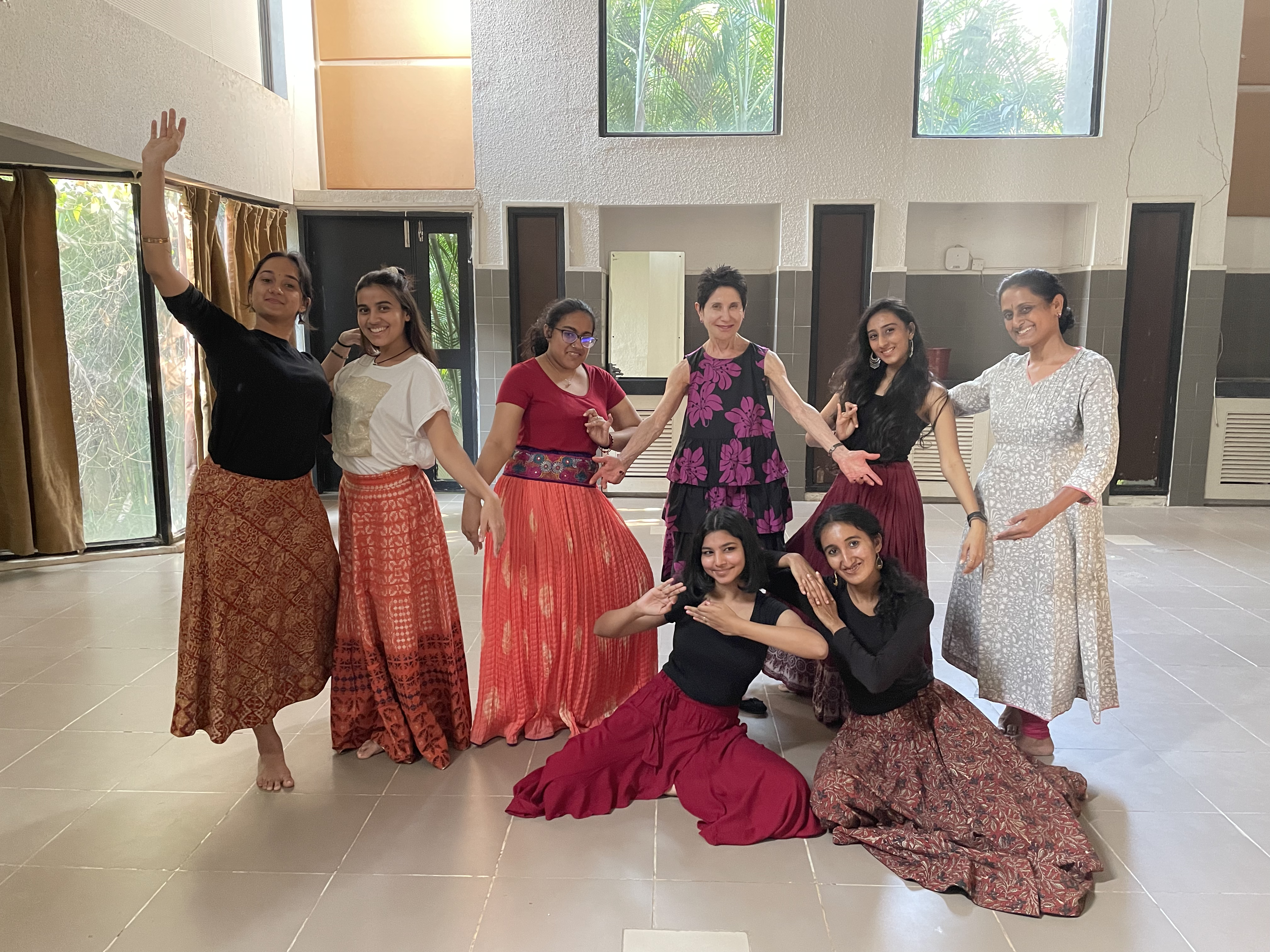 Among the issues we discussed at LFE is the popularity of “socio-emotional learning,” a strong tendency internationally. In Kenya, Shamiri has recognized the importance of coordinating mental health interventions with improved attitudes toward cognitive learning, because one of the major stressors for students is the pressure to do well in school. Therefore, it does not serve the needs of depressed adolescents to distinguish between the pleasures of artmaking versus the rigors of learnings, to favor one over the other and to cast schoolwork as a burden when it is a challenge that students need to address to reduce psychological stress. This conflict between head and heart has been a damaging if unintended consequence of SEL. With Pre-Texts, the whole person is engaged. “Use any text as raw material to make art and reflect on what we did” is a prompt that engages cognitive, socio-emotional, creative and civic dimensions in a dynamic system. After dancing a paragraph, or performing a pyramid, or acting out a poem, making story boards from a chapter on data management, a musical score (all activities we did with groups of participants – including principals of private schools) we asked: Is this a cognitive exercise? Is it expressive of emotions? Does it engage groups and sociability? Was it fun? To all the questions there was enthusiastic assent, and acknowledgement that the same activity achieves all the goals of education.
Among the issues we discussed at LFE is the popularity of “socio-emotional learning,” a strong tendency internationally. In Kenya, Shamiri has recognized the importance of coordinating mental health interventions with improved attitudes toward cognitive learning, because one of the major stressors for students is the pressure to do well in school. Therefore, it does not serve the needs of depressed adolescents to distinguish between the pleasures of artmaking versus the rigors of learnings, to favor one over the other and to cast schoolwork as a burden when it is a challenge that students need to address to reduce psychological stress. This conflict between head and heart has been a damaging if unintended consequence of SEL. With Pre-Texts, the whole person is engaged. “Use any text as raw material to make art and reflect on what we did” is a prompt that engages cognitive, socio-emotional, creative and civic dimensions in a dynamic system. After dancing a paragraph, or performing a pyramid, or acting out a poem, making story boards from a chapter on data management, a musical score (all activities we did with groups of participants – including principals of private schools) we asked: Is this a cognitive exercise? Is it expressive of emotions? Does it engage groups and sociability? Was it fun? To all the questions there was enthusiastic assent, and acknowledgement that the same activity achieves all the goals of education.
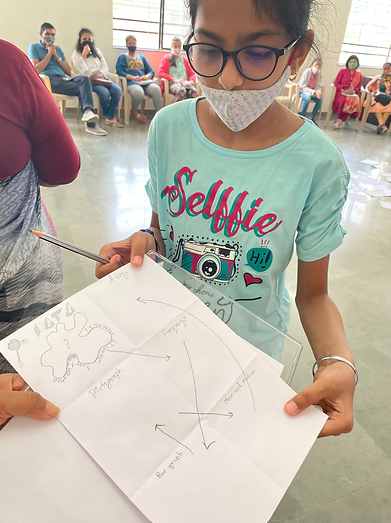
The next steps in Pune will be to identify a few schools as the site for our pilot (which will include both the treatment and control). Then we will train by zoom teachers of every subject from two different levels, grades 1-2 and grades 7-8. It will be important to include all teachers at these levels as well as the principal. The group of 20-25 future facilitators will include the FLAME University team and members of LFE.